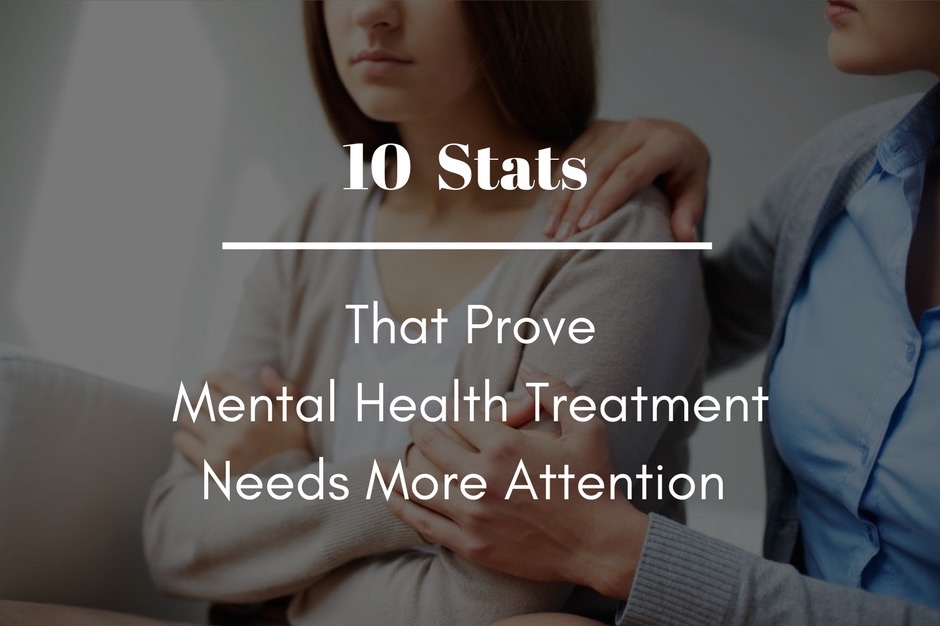May is Mental Health Awareness Month. Only just prior to the launch of Mental Health Month, the 2017 Ontario Budget was released on April 28th. While a total of $518 Million was included in the budget for hospital funding (representing a 3% boost) and $9 billion for hospital construction projects over 10 years, only $140 million was specifically directed at the Mental Health Treatment Community – $2.5 million earmarked for the planning of an expansion to the Centre for Addiction and Mental Health (CAMH) in Toronto.
Unfortunately, this kind of spending comes nowhere near close to the kind of funding we would need to make Ontario’s mental health care system truly effective. Seeing budgets like this one is yet another reminder that Canada as a whole does not put enough resources into funding mental health care. In the spirit of Mental Health Month, we wanted to take a moment to once again raise concerns over the lack of attention to an issue long overdue for immediate action.
Here are 10 facts that really drive home the point that Mental Health Care needs to be a priority in this country – please share on social media to GET LOUD during #MentalHealthMonth!
1 in 5
The number of people who will experience a mental health issue or a mental illness every year in Canada.
20%
The number of Canadians who will personally experience a mental illness in their lifetime. The number of Canadians who are affected by mental illness, however, is of course much larger since friends and families are also impacted.
50-75%
The percentage of mental health disorders that begin in childhood. Despite the fact that it has been shown time and again that early intervention is the key to helping people recover from or manage mental illness effectively, our system continues to fail to provide youth with the mental health treatment they need.
80%
The number of people who can get back on their feet and back to their regular activities when mental health issues are recognized and treated early. Again, early intervention is key.
4,000
The number of youth aged 15-24 who will die prematurely in Canada due to suicide each year. Suicide is among the leading causes of death for young people in Canada, second only to accidents. Canada’s youth suicide rate is the third highest in the industrialized world.
$50 Billion
The amount of money it costs the Canadian economy to NOT have the proper supports in place to help those struggling with mental health issues. Why is that number so high? Mental illness accounts for roughly 50 percent of family doctors’ time, and more hospital-bed days than cancer. Mental illness is the leading cause of disability, accounting for 30 per cent of workplace-insurance claims and 70 per cent of total compensation costs. The burden of mental illness and addiction has been calculated to exceed cancers by 1.5 times, and more than seven times the cost of all infectious diseases. One-third of Ontario residents who receive social assistance have a mental illness and mental disorders in youth are the second highest hospital care expenditure. So really, one can see why investing in a good Mental Health Care system in Canada would actually save us money in the long term.
6 Months to a Year
The average wait time to see a mental health care specialist, such as a psychiatrist, psychologist or therapist. One-third of the people on these waiting lists never receive adequate treatment, if they receive any at all. During that waiting period, many patients will be in and out of hospital emergency rooms, trying to cope with their mental illness. A Canadian musician wrote a song dedicated to excessive wait times for mental health care in Canada called 300 Days, which has been viewed tens of thousands of times since he shared it in February of this year.
1 in 5
The number of children in Canada who need a mental health service and actually receive mental health treatment. That’s extremely problematic considering again that early intervention is key.
$200
What the hourly rate in major city centres can be to see a psychologist. While 60% of Canadians have some form of insurance to help manage these costs, the amount available for therapy may cover only a handful of sessions (which is useless if recovery and a return to normal life is the goal). Those who have benefits with better coverage are more likely to be higher-income workers with stable employment (and we all know that stable employment is on the outs anyway). We NEED better publicly funded health care services in Canada.
7%
The percentage of the $21- billion Canada spends on health care that goes toward mental health. This puts Canada far behind places like New Zealand, Australia and the United Kingdom where funding ranges from 10-14% of the health care budget.
Eli’s Place Residential Treatment Centre will offer a range of recovery-based programs for adults 18 – 35 years of age who have a serious mental illness, and who may also be struggling through issues of substance abuse.
The first of its kind in Canada, Eli’s Place will provide treatment within a therapeutic rural environment. There, participants will develop the skills to recover from illness, as they gain valuable life and work skills to help ensure a successful transition back to the community. As part of its multi-phase approach, Eli’s Place will also provide ongoing in-community support as needed.





